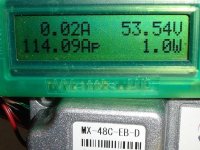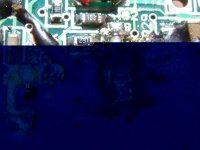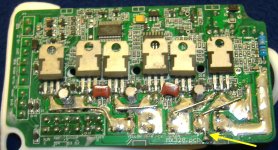oldhaq
100 W
I took apart my magic controllers and took some pics.
the 36v;
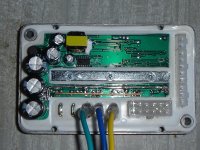



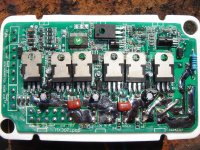

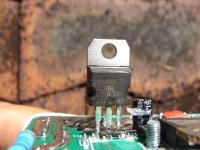

the 48v;
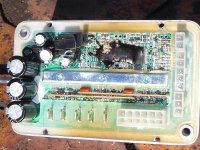

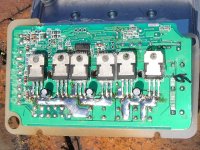

Notice a big difference between both boards is that most of the components are mounted on opposite sides,
and no shunt bar on the 48v. I added some wires from the negative connector to the fets on the 48v as there was only (wideish) foil trace before,
it had very poor acceleration and top speed but it now goes like the clappers! Harder than the GM 48v standard controller on my usual ride.
With a shunt mod these controllers do seem like "magic". Before the mod, the wattsup measured 22a max draw, haven't measured it since tho, feels like over 40a.
75v120a mosfet datasheet ... http://www.datasheetcatalog.org/datasheet/stmicroelectronics/9231.pdf
The 3 largest caps are 63v470uf.
the 36v;




the 48v;


Notice a big difference between both boards is that most of the components are mounted on opposite sides,
and no shunt bar on the 48v. I added some wires from the negative connector to the fets on the 48v as there was only (wideish) foil trace before,
it had very poor acceleration and top speed but it now goes like the clappers! Harder than the GM 48v standard controller on my usual ride.
With a shunt mod these controllers do seem like "magic". Before the mod, the wattsup measured 22a max draw, haven't measured it since tho, feels like over 40a.
75v120a mosfet datasheet ... http://www.datasheetcatalog.org/datasheet/stmicroelectronics/9231.pdf
The 3 largest caps are 63v470uf.




